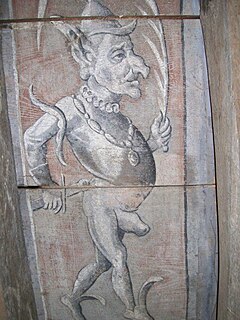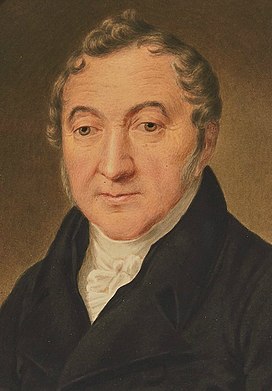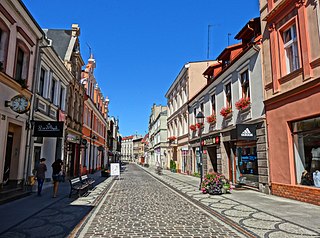
Hamburg, officially the Free and Hanseatic City of Hamburg, is the second-largest city in Germany after Berlin, as well as the overall 7th largest city and largest non-capital city in the European Union with a population of over 1.84 million. Hamburg's urban area has a population of around 2.5 million and its metropolitan area is home to more than five million people. The city lies on the River Elbe and two of its tributaries, the River Alster and the River Bille. One of Germany's 16 federated states, Hamburg is surrounded by Schleswig-Holstein to the north and Lower Saxony to the south.

Ludwigsburg Palace, nicknamed the "Versailles of Swabia", is a 452-room palace complex of 18 buildings located in Ludwigsburg, Baden-Württemberg, Germany. Its total area, including the gardens, is 32 ha – the largest palatial estate in the country. The palace has four wings: the northern wing, the Alter Hauptbau, is the oldest and was used as a ducal residence; the east and west wings were used for court purposes and housing guests and courtiers; the southern wing, the Neuer Hauptbau, was built to house more court functions and was later used as a residence.

St. Anne's Museum Quarter was previously an Augustinian nunnery, St. Anne's Priory. Since 1915 it has housed St. Anne's Museum, one of Lübeck's museums of art and cultural history containing Germany's largest collection of medieval sculpture and altar-pieces, including the famous altars by Hans Memling, Bernt Notke, Hermen Rode, Jacob van Utrecht and Benedikt Dreyer.

Saint Peter's Church in Hamburg, Germany stands on the site of many former cathedrals. Built by order of Pope Leo X, it has been a Protestant cathedral since the Reformation and its congregation forms part of the Evangelical Lutheran Church in Northern Germany.

The Internationales Maritimes Museum Hamburg is a private museum in the HafenCity quarter of Hamburg, Germany. The museum houses Peter Tamm's collection of model ships, construction plans, uniforms, and maritime art, amounting to over 40,000 items and more than one million photographs. It opened in a former warehouse in 2008.

The Museum for Hamburg History is a history museum located in the city of Hamburg in northern Germany. The museum was established in 1908 and opened at its current location in 1922, although its parent organization was founded in 1839. The museum is located near the Planten un Blomen park in the center of Hamburg. The museum is commonly reviewed among the museums of the city of Hamburg.

Jenisch House (Jenisch-Haus) is a country house in Hamburg built in the 19th century and an example of Hanseatic lifestyle and neoclassical architecture. As of 2008, Jenisch House is the home of the Museum für Kunst und Kultur an der Elbe. It is located within the Jenisch park in the Othmarschen quarter.

Scottish renaissance painted ceilings are decorated ceilings in Scottish houses and castles built between 1540 and 1640. This is a distinctive national style, though there is common ground with similar work elsewhere, especially in France, Spain and Scandinavia. An example in England, at Wickham, Hampshire, was recorded in 1974. There are records of over 100 examples, and a much smaller number of painted ceilings survive in-situ today. Some salvaged painted beams and boards are stored by Historic Environment Scotland. The paintings at Crathes Castle, dating from 1597 are probably the best known.

Joh. Berenberg, Gossler & Co. KG, commonly known as Berenberg Bank and also branded as simply Berenberg, is a multinational full-service investment bank based in Hamburg, Germany.

46 High Street is a timber-framed, black-and-white Elizabethan merchant's house in Nantwich, Cheshire, England, located near the town square at the corner of High Street and Castle Street. The present building dates from shortly after the fire of 1583, and is believed to have been built for Thomas Churche, a linen merchant from one of the prominent families of the town. It remained in the Churche family until the late 19th century.

Adolph Friedrich Vollmer was a German landscape and marine painter and graphic artist. He and his contemporary, the painter Christian Morgenstern, were pioneers in Hamburg of early Realism in painting.

Ludwig Erdwin Seyler was a German banker, merchant and politician. He was by marriage a member of the Hanseatic Berenberg banking dynasty, and was a partner in the Hamburg firm Joh. Berenberg, Gossler & Co. for 48 years (1788–1836), for 46 years as the company's senior partner. The "Co." part of the company name refers to him. Seyler was one of the first merchants and bankers from modern Germany to establish trade relations with the United States and East Asia. He served as a member of the government of Hamburg during the Napoleonic Wars and later as the President of the Commercial Deputation, one of the city-state's main political bodies, and as a member of the Hamburg Parliament. Ludwig Seyler was a son of the Swiss-born theatre director Abel Seyler and a son-in-law of the bankers Johann Hinrich Gossler and Elisabeth Berenberg through his marriage to their eldest daughter Anna Henriette Gossler.

The Hamburg temple model is a Baroque architectural model of the Temple of Solomon. It covers an area of about 12 square metres (130 sq ft) and is made from wood. It is square, with four wings and nine courtyards, two of them in the central axis.

The Krameramtsstuben are historic buildings on Krayenkamp, near St. Michaelis Church in the Neustadt district of Hamburg, Germany.

Katharinenstraße 9, also Catharinenstraße 9, was a town house in the centre of Hamburg, Germany, built c. 1630-1640. In 1939 the house was added to the list of monuments in central Hamburg. It was not removed until 1954, 13 years after its destruction in 1941.

Grimm is a former island in the Alster river at Hamburg, Germany, east of Cremon. Today there is a street in the old town, the road is probably on the island.

Hamm (help·info) is a quarter in the borough of Hamburg-Mitte, in the eastern part of Hamburg, Germany. Once a popular garden suburb of rich traders and merchants, in the first half of the 20th century it grew to become one of the most populated quarters of Hamburg. In the Second World War, however, the area was mostly flattened. As of 2020 the population was 37,989.

Długa Street is the longest street of Old Town district in Bydgoszcz and the most important historically. It stands next to Gdańska Street and Dworcowa Street as one of the most important avenues of downtown Bydgoszcz.

The Kontorhaus District is the southeastern part of Altstadt, Hamburg, between Steinstraße, Meßberg, Klosterwall and Brandstwiete. The streetscape is characterised by large office buildings in the style of Brick Expressionism of the early 20th century.

The Alte Handelsbörse or Alte Börse in Leipzig, Saxony, Germany, is the city's oldest assembly building of merchants, and also the oldest Baroque building. Built as the Börse in 1678, it is now used as an event venue and is known in English as the Old Stock Exchange.





















